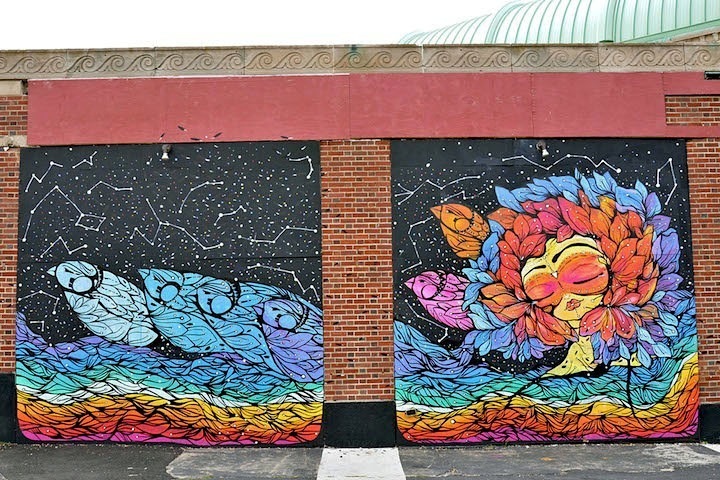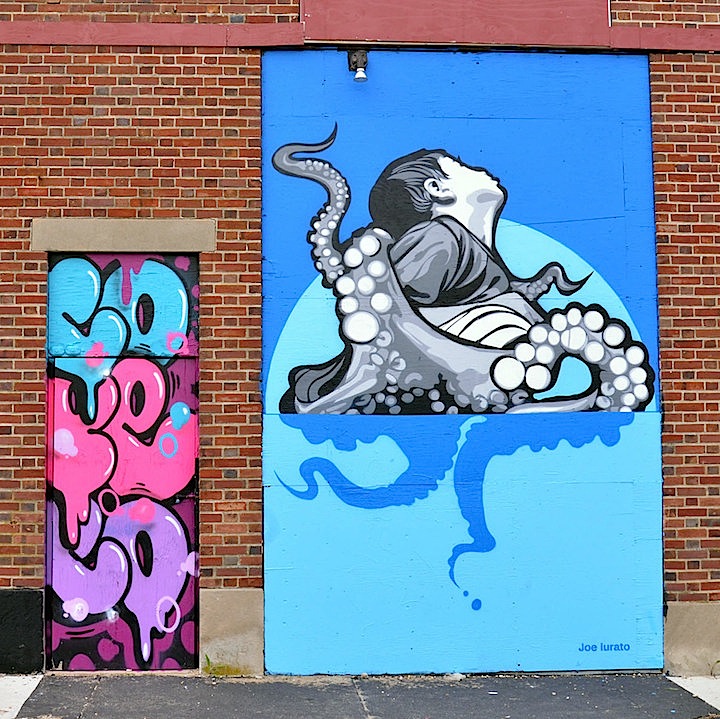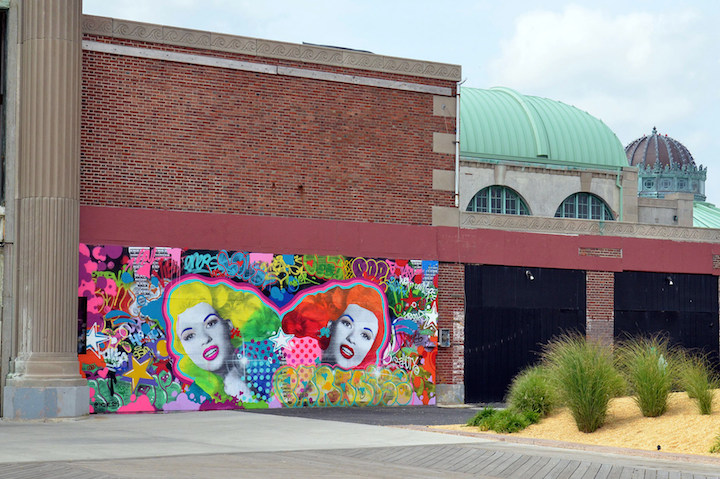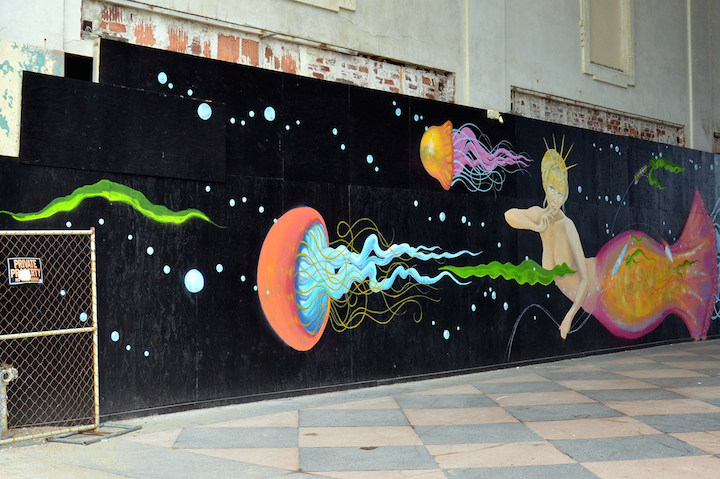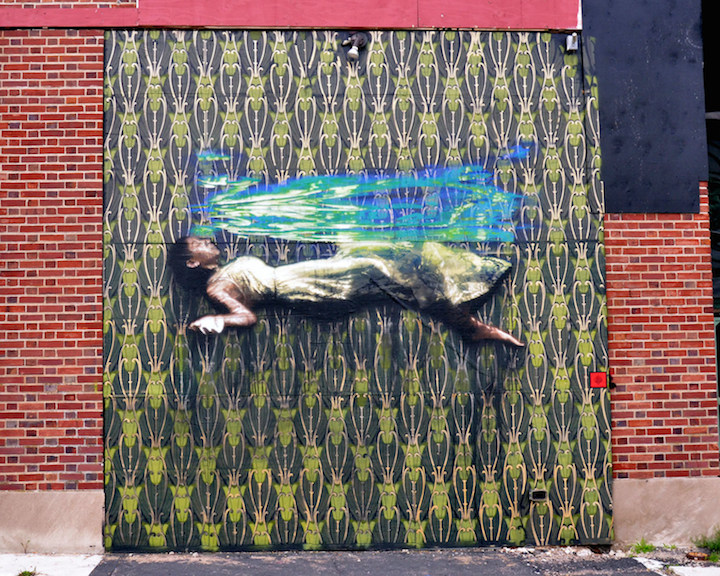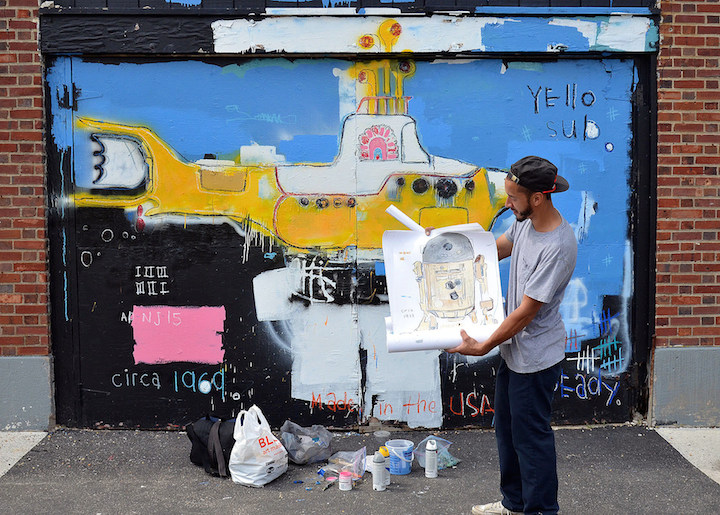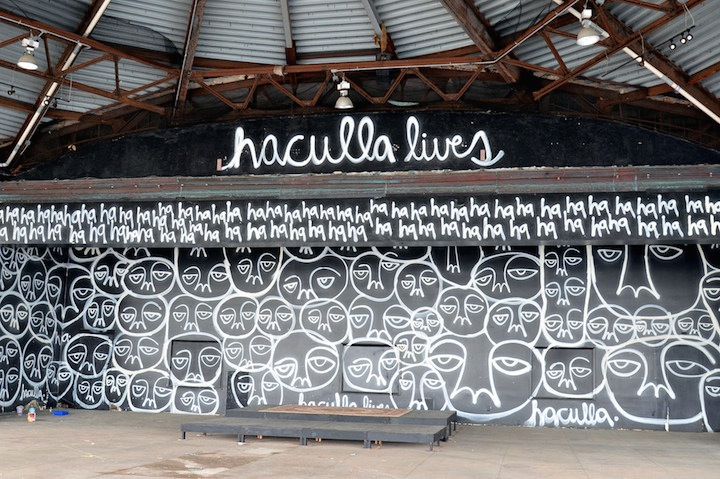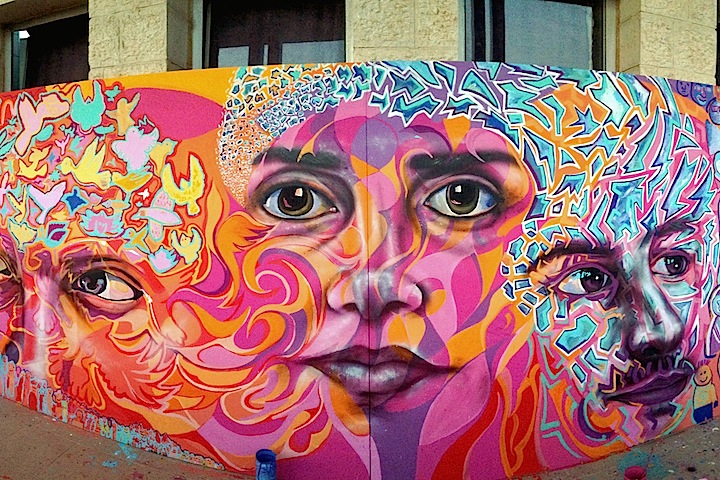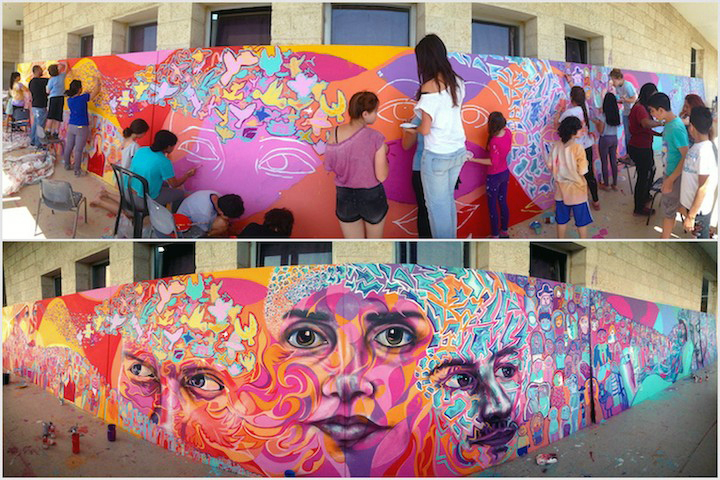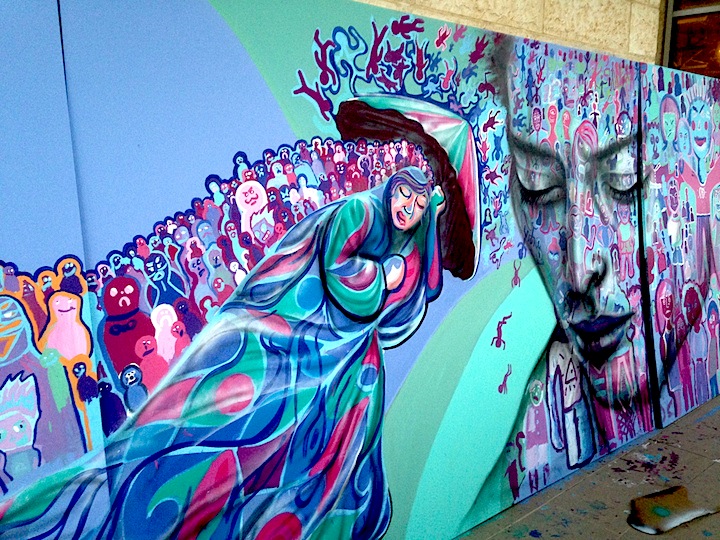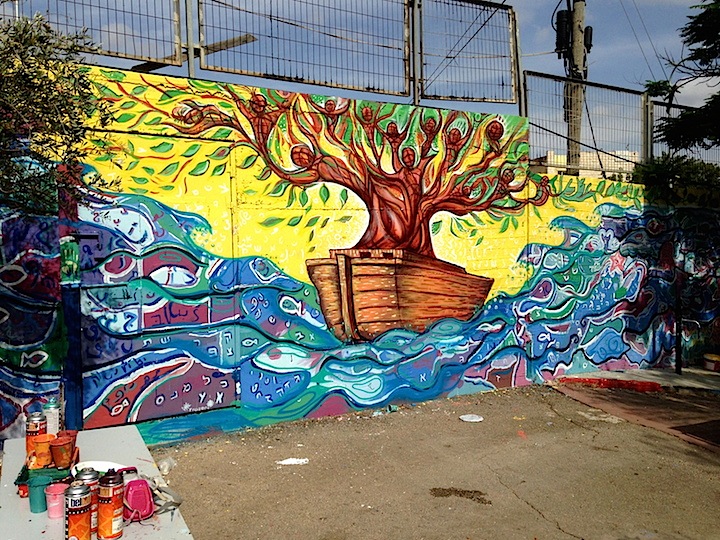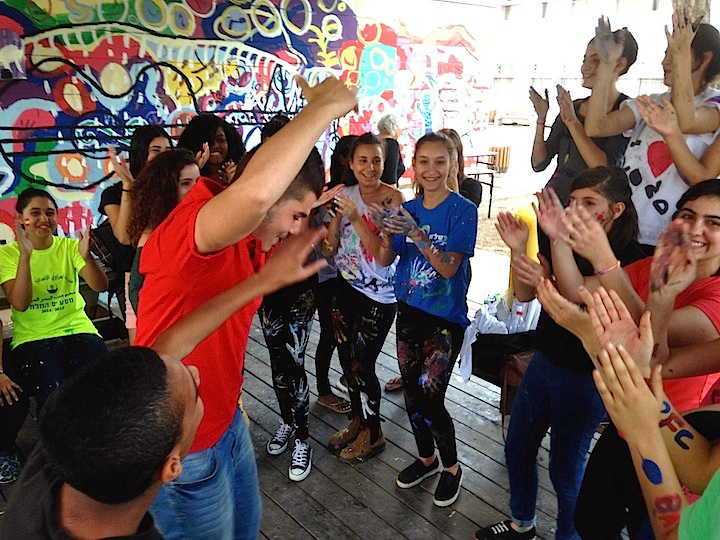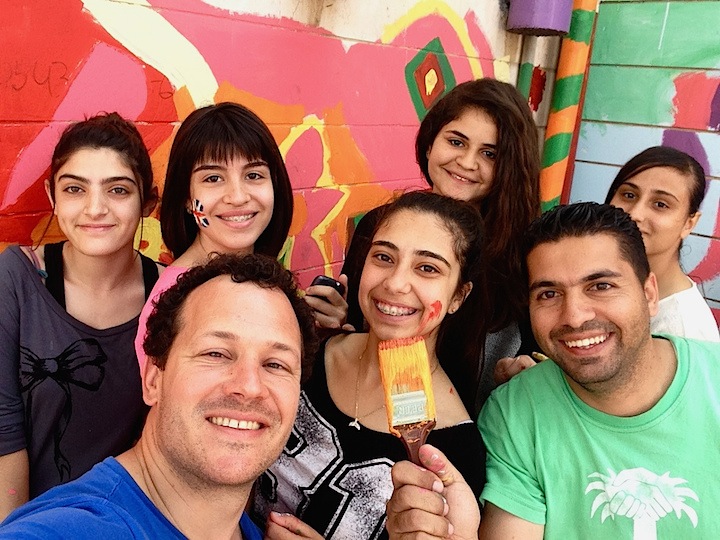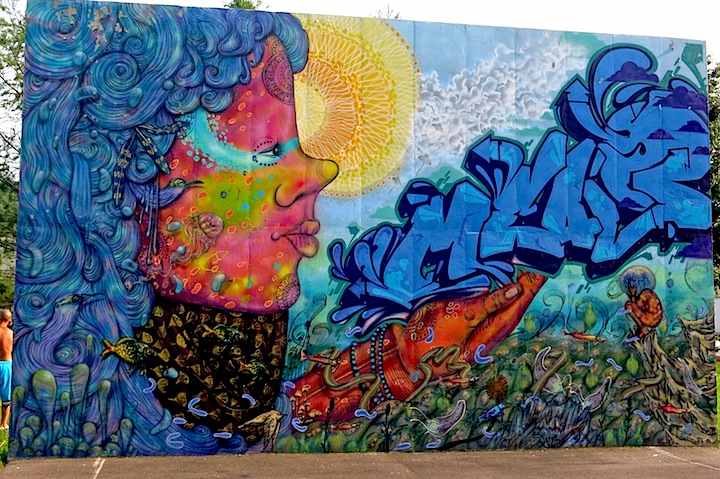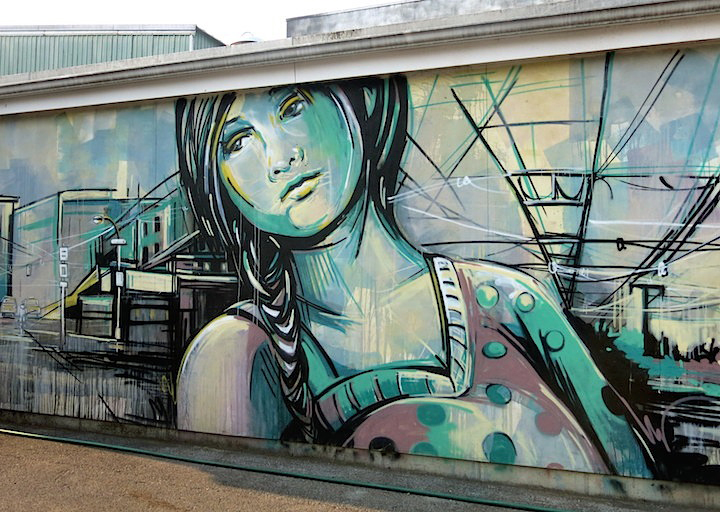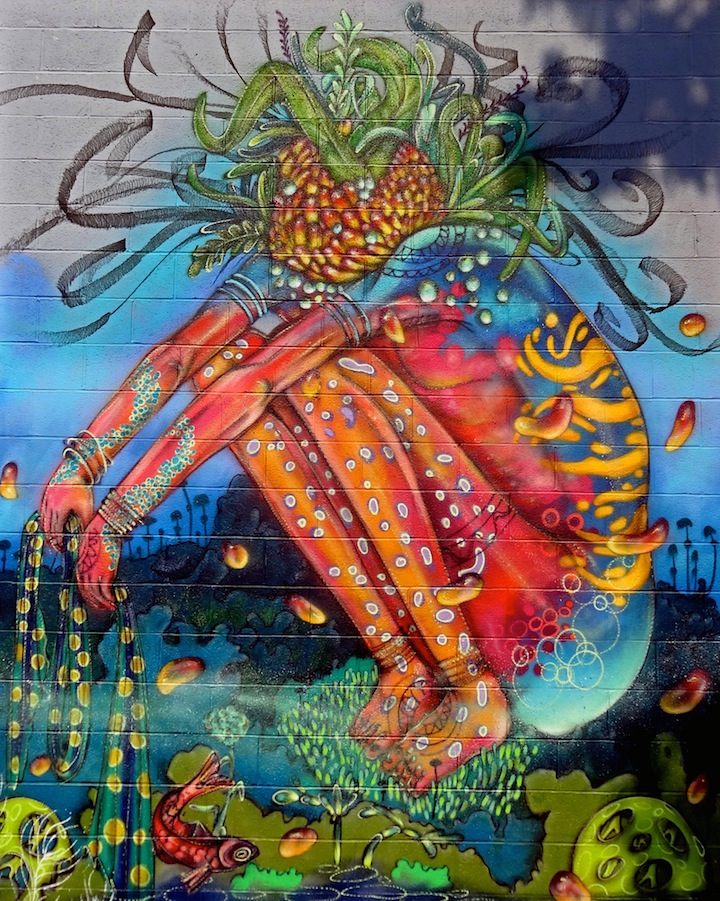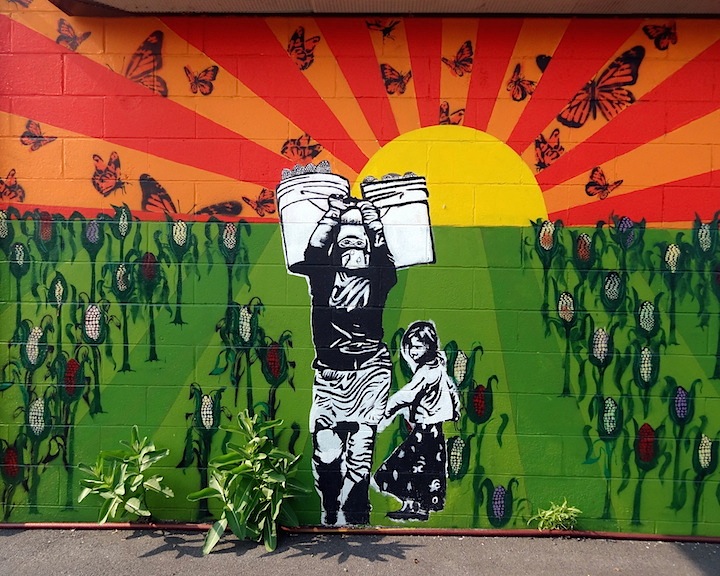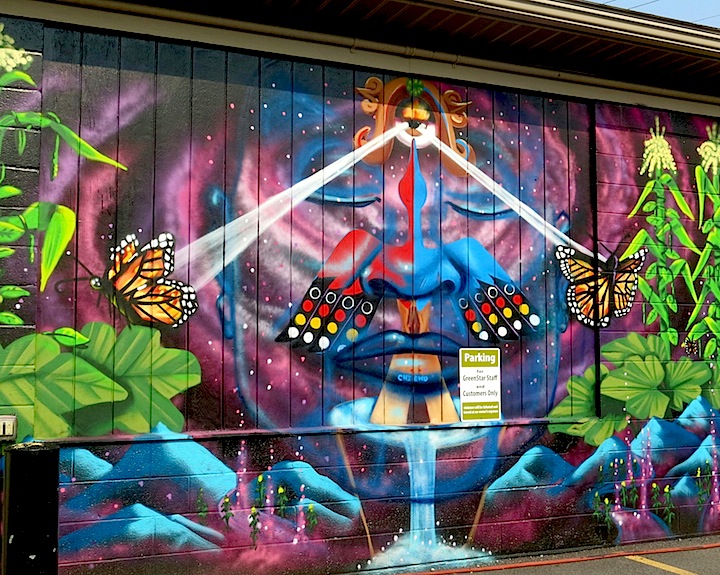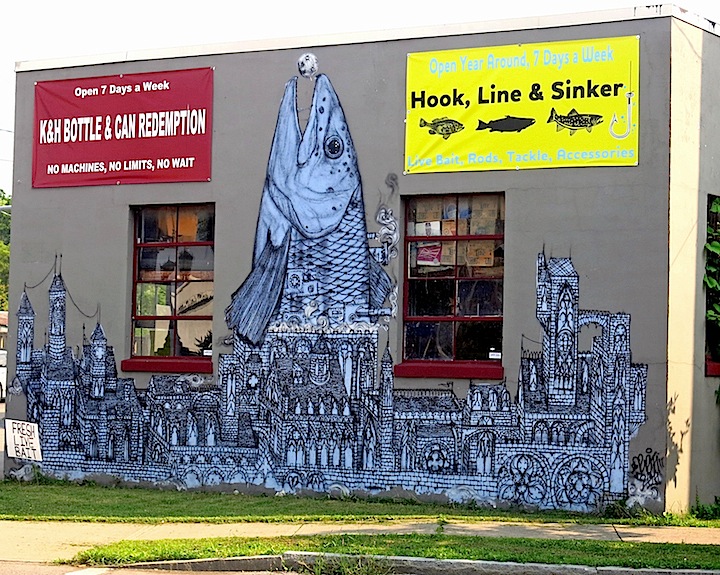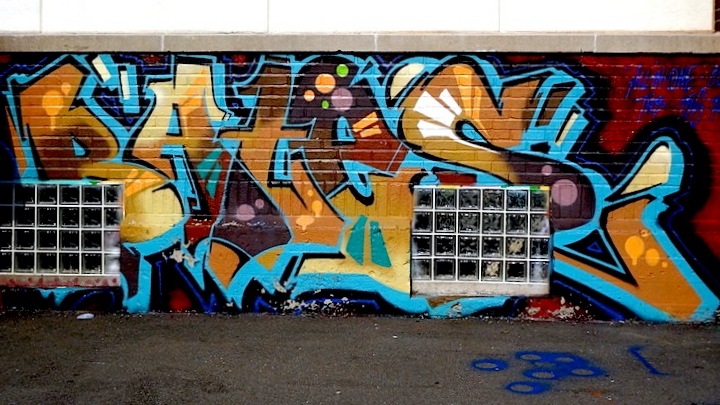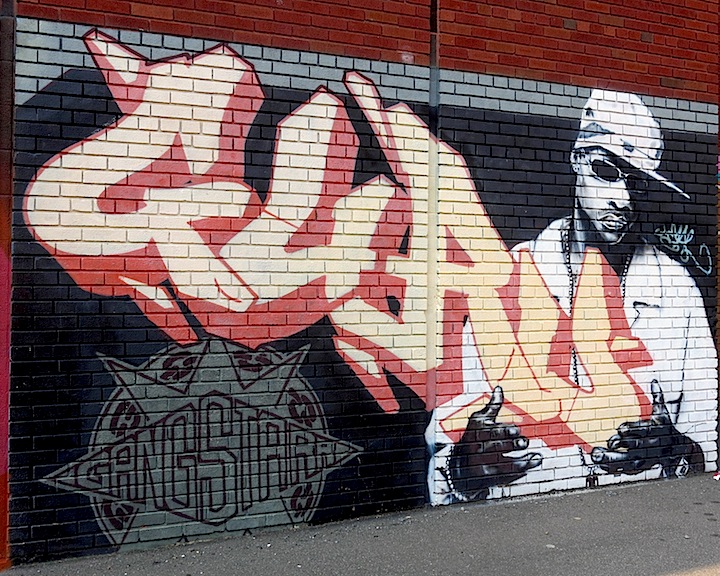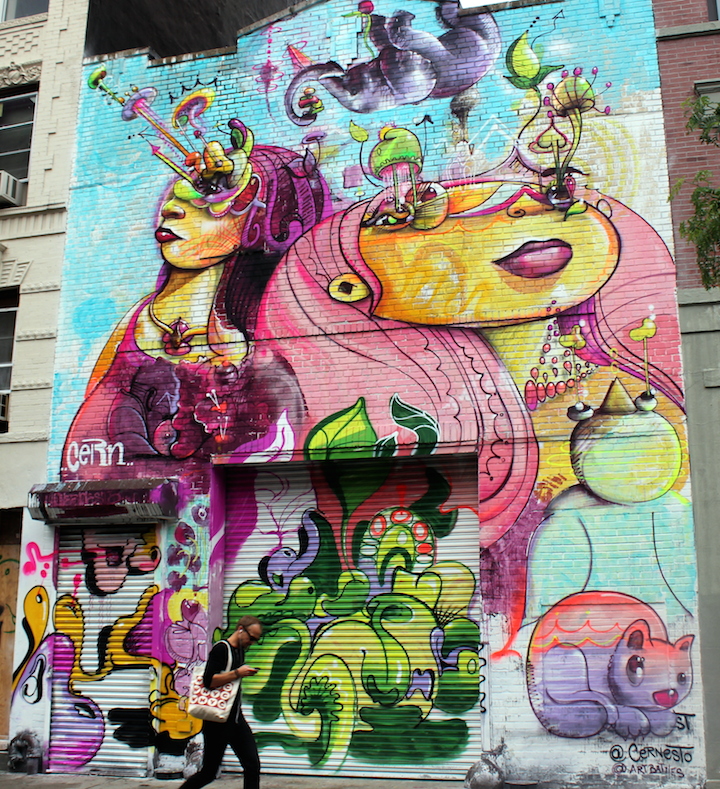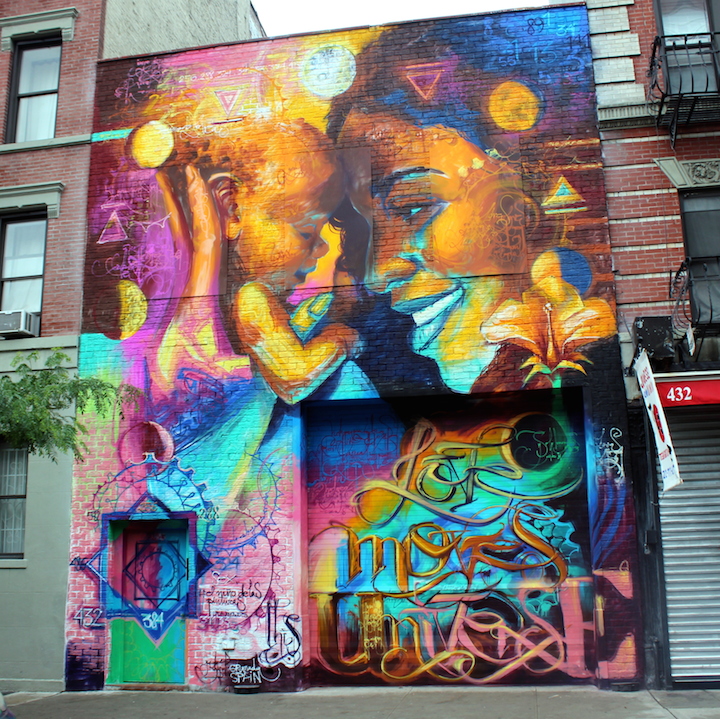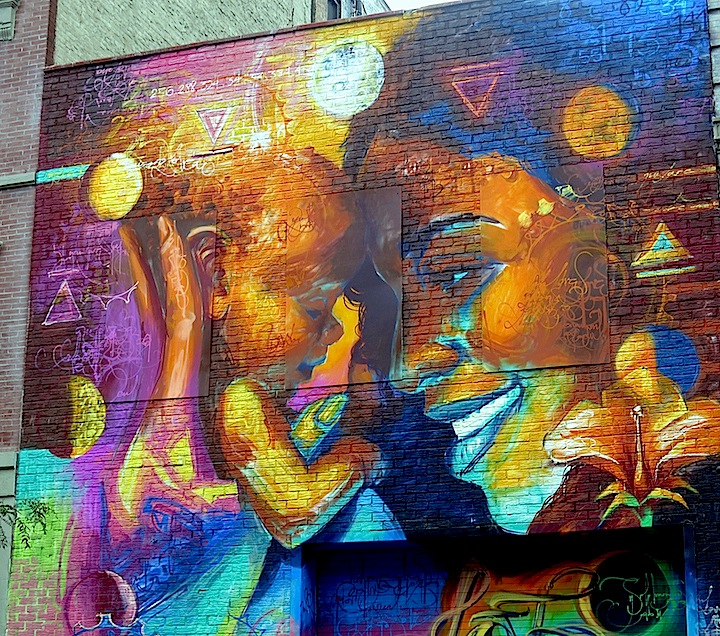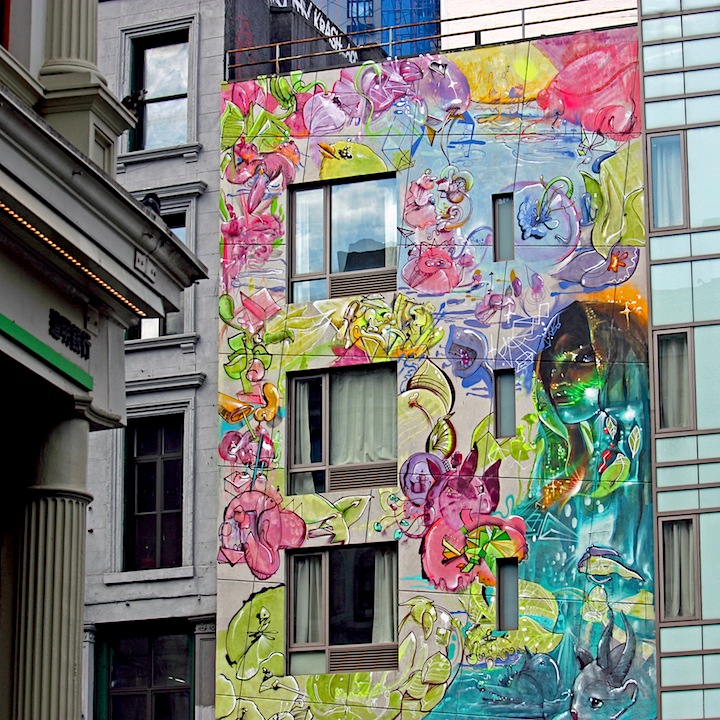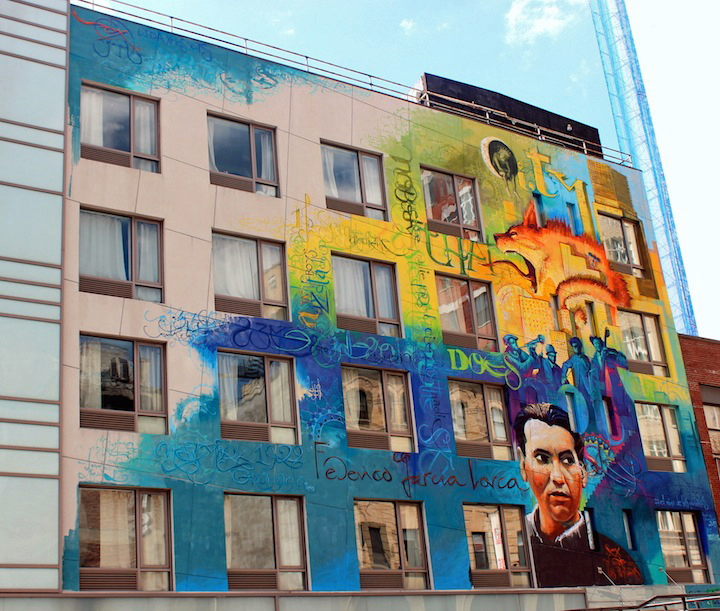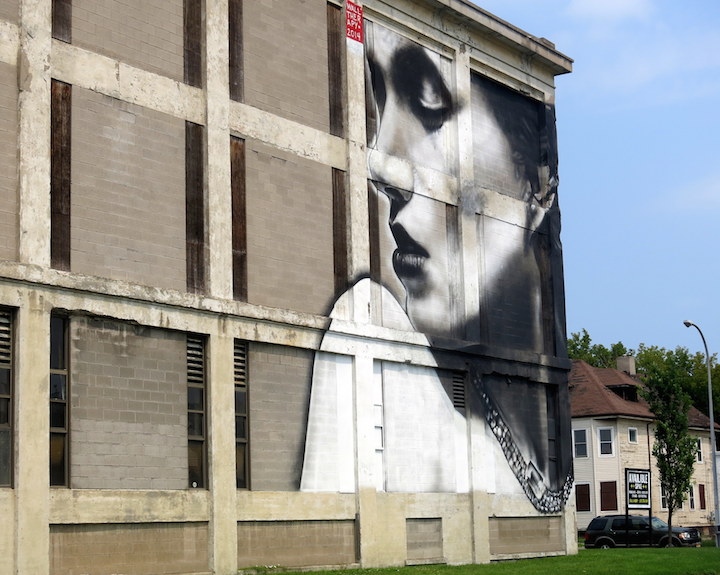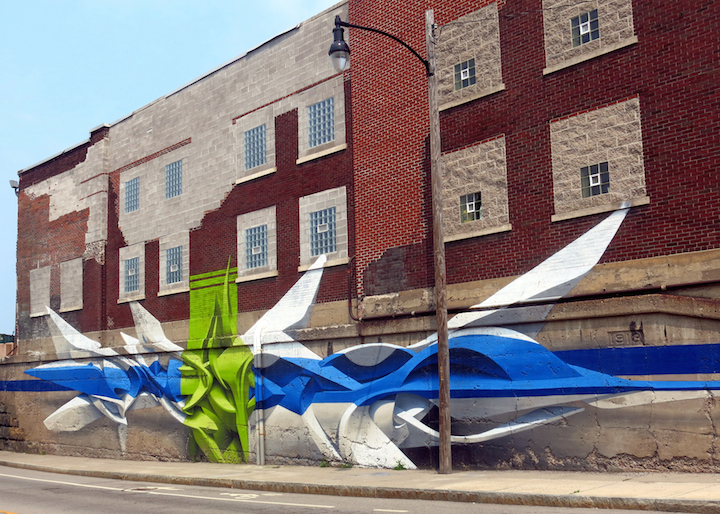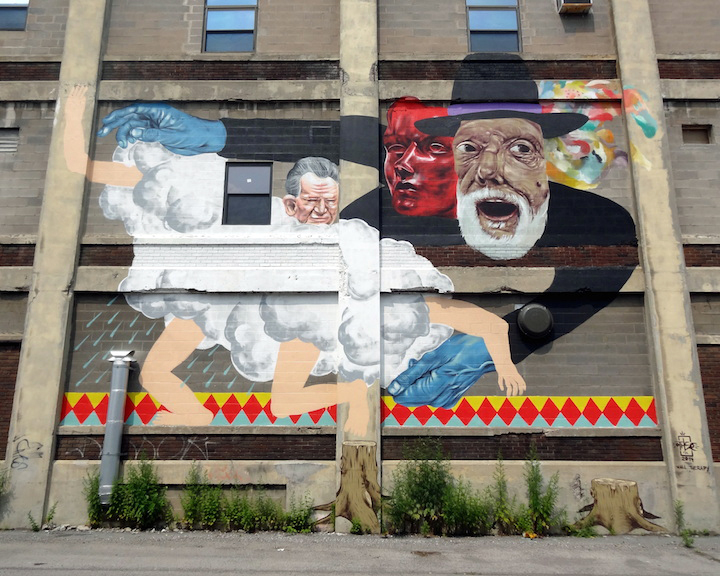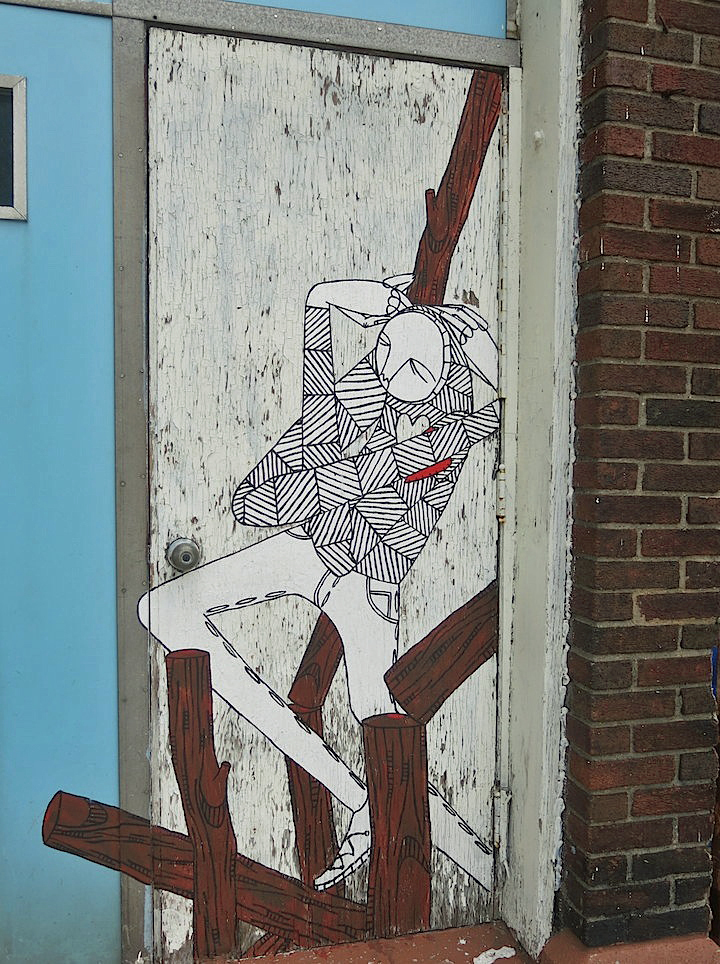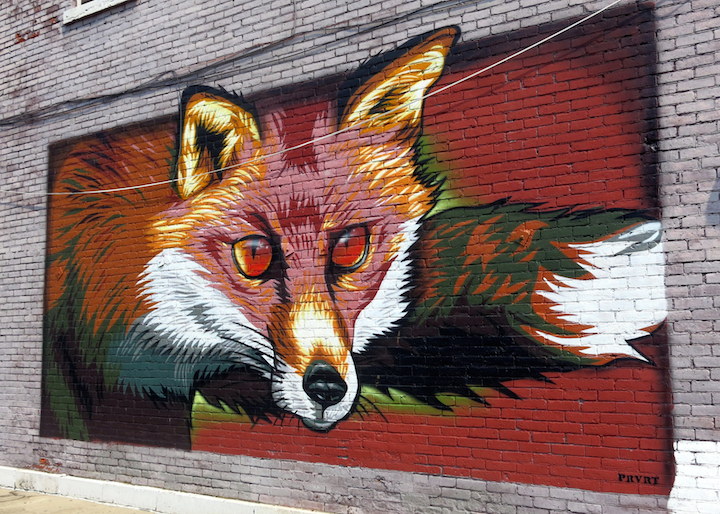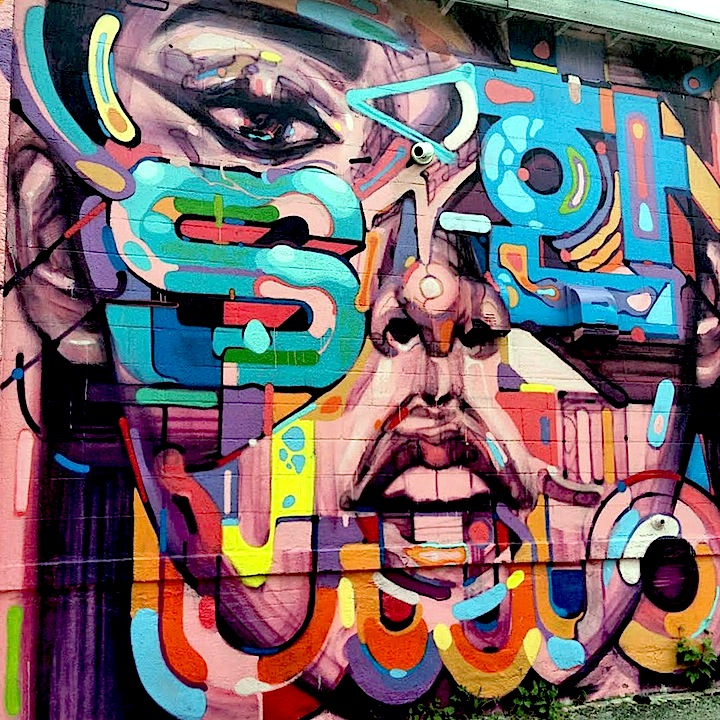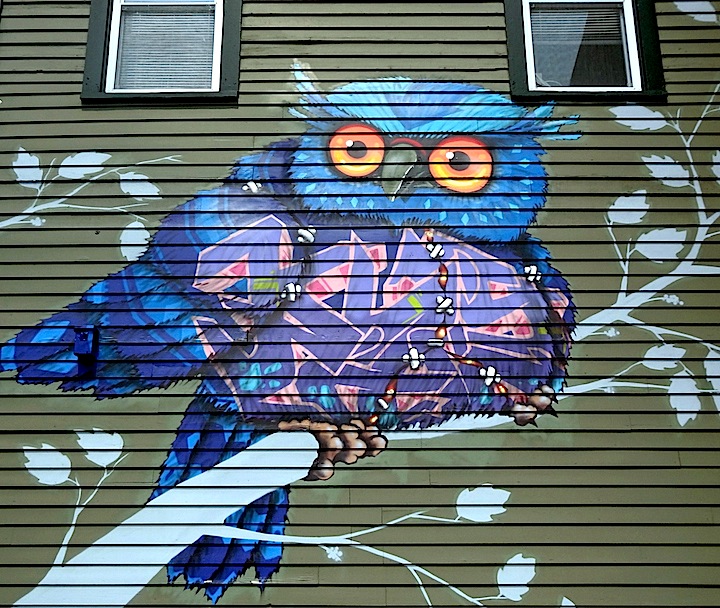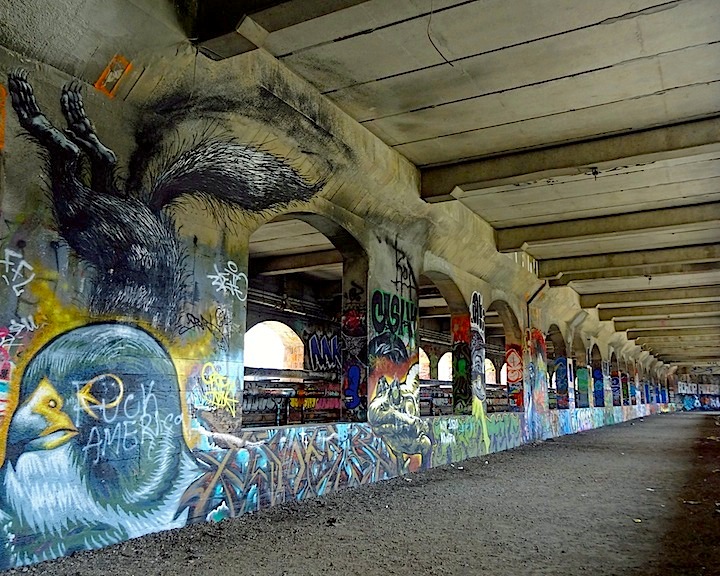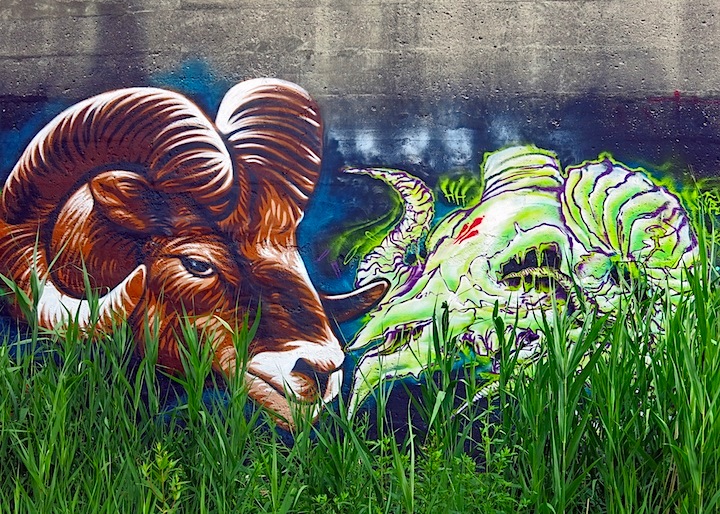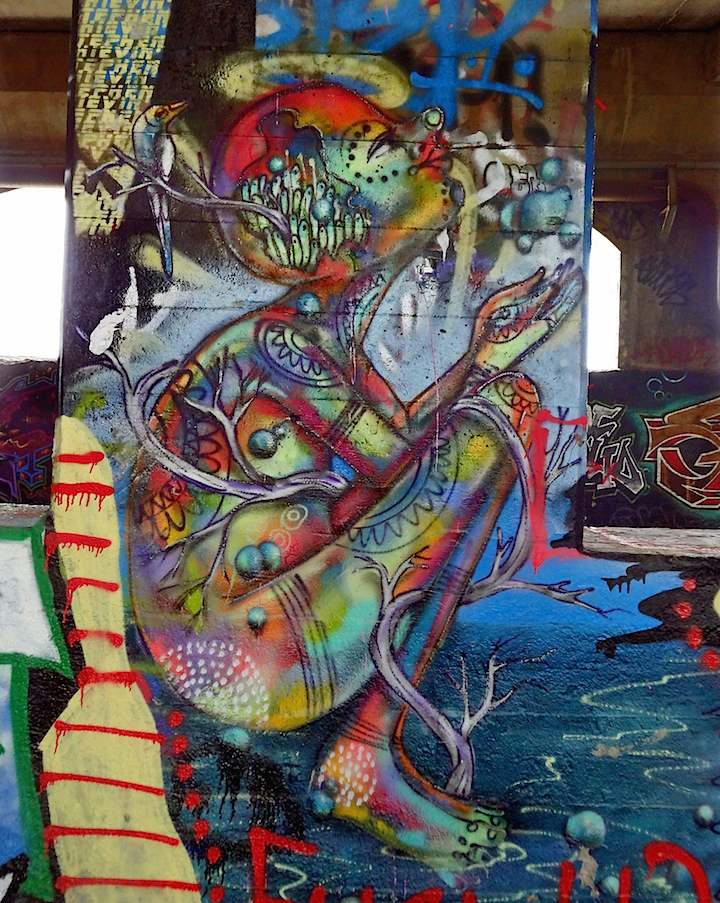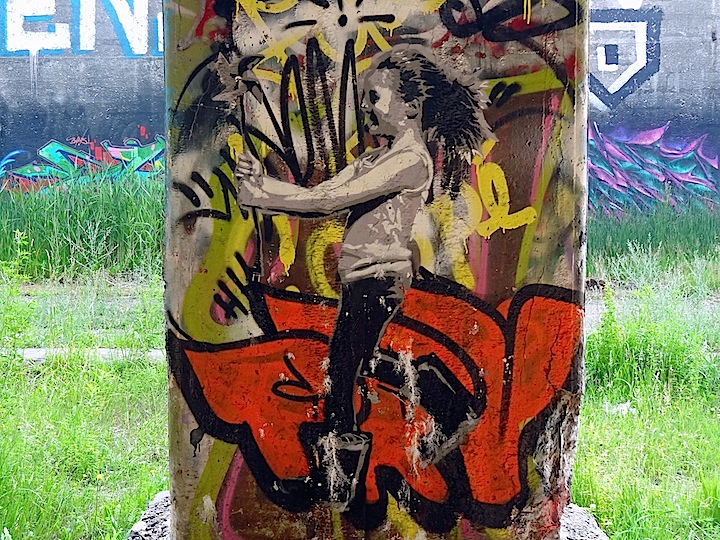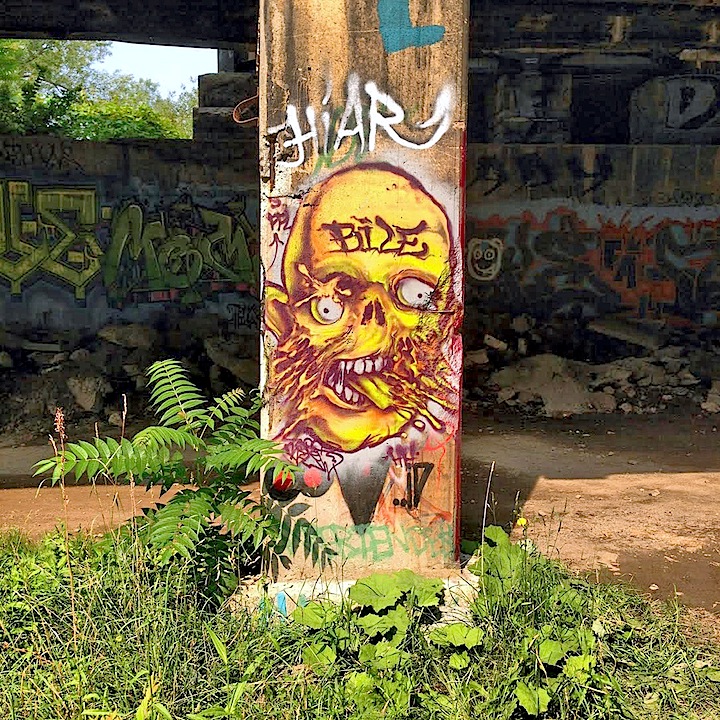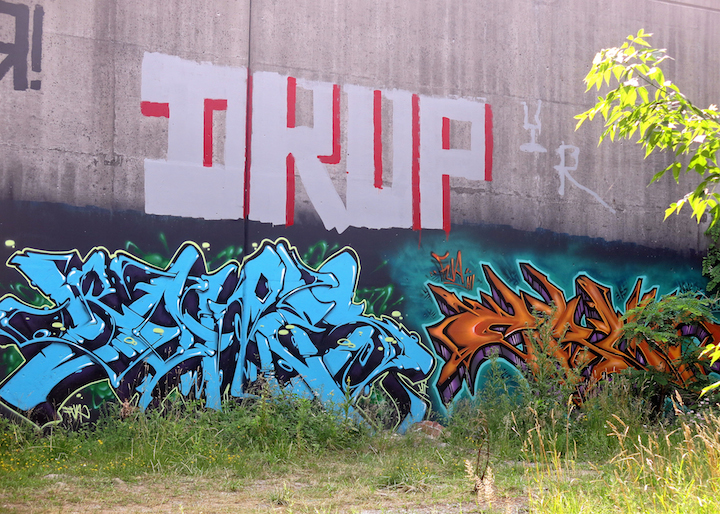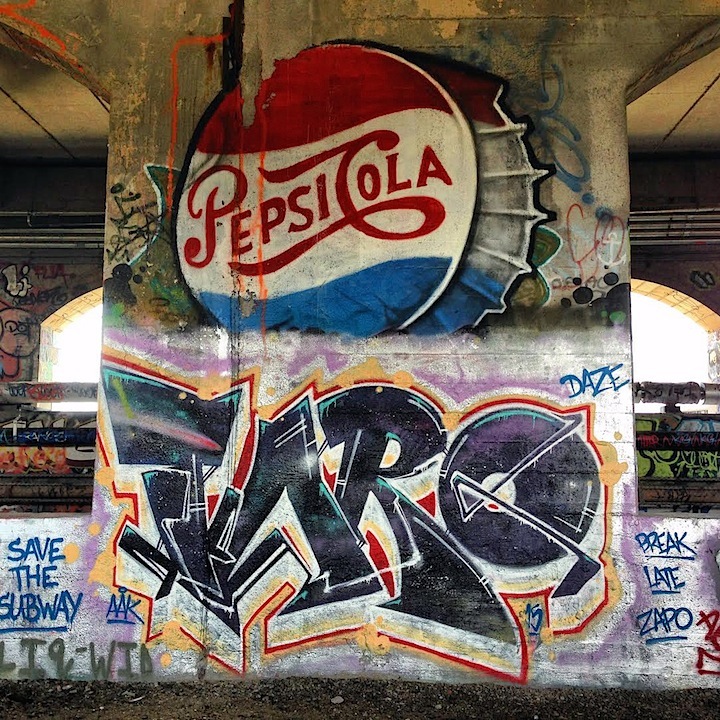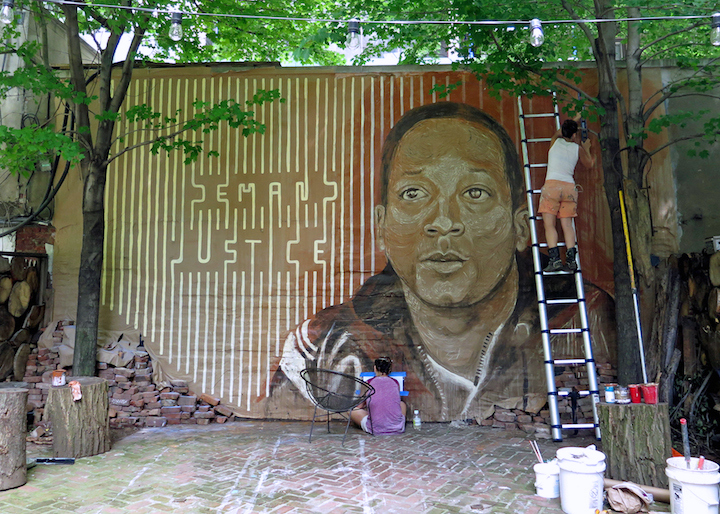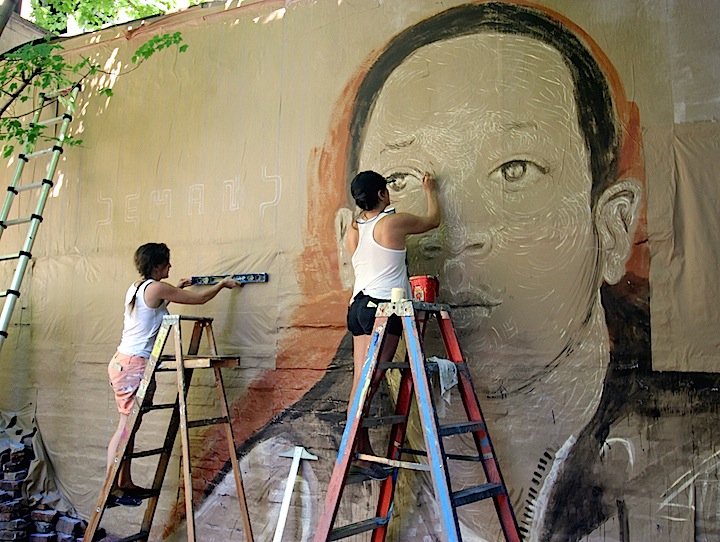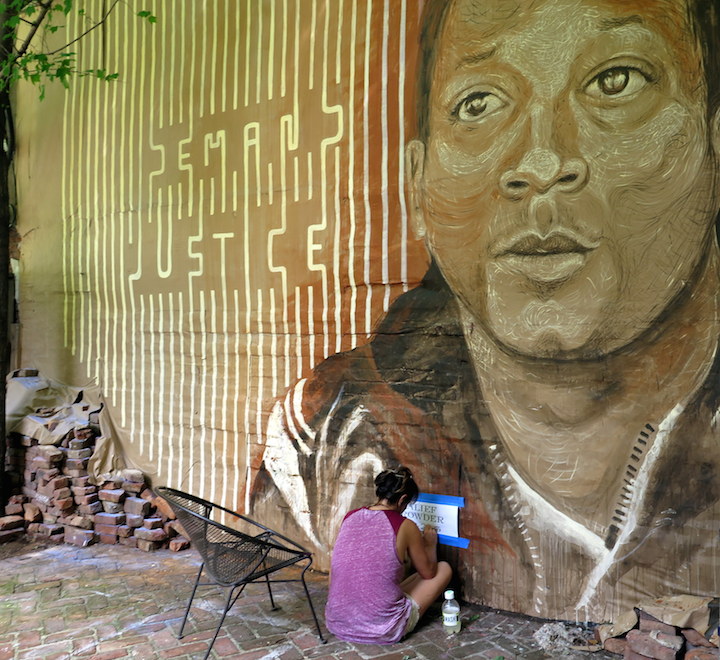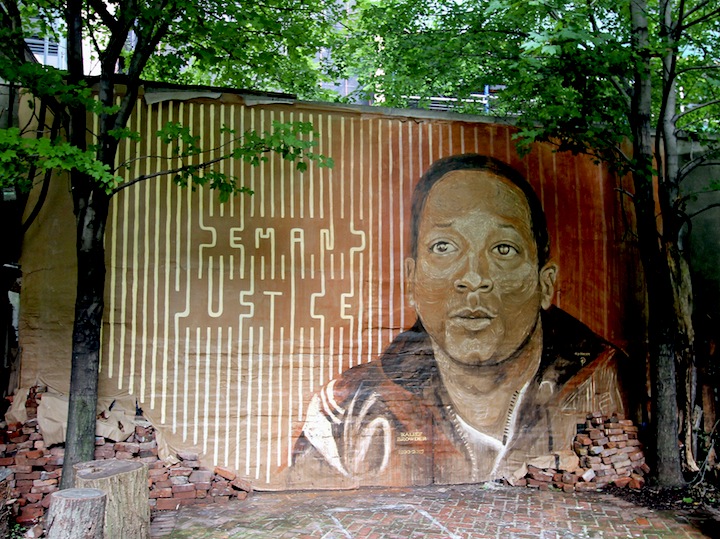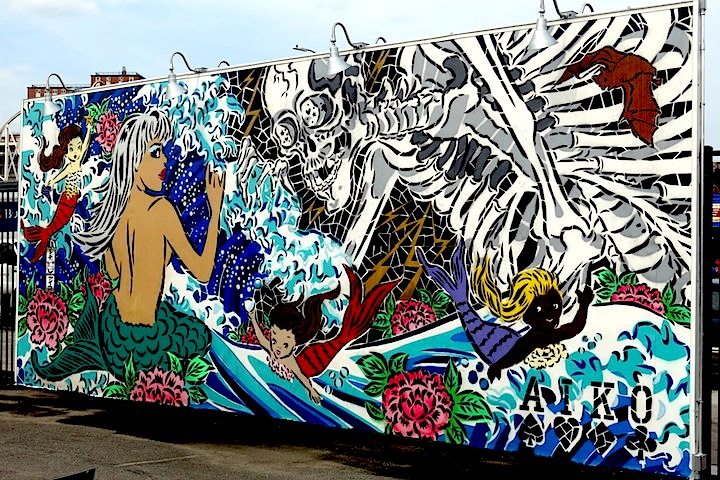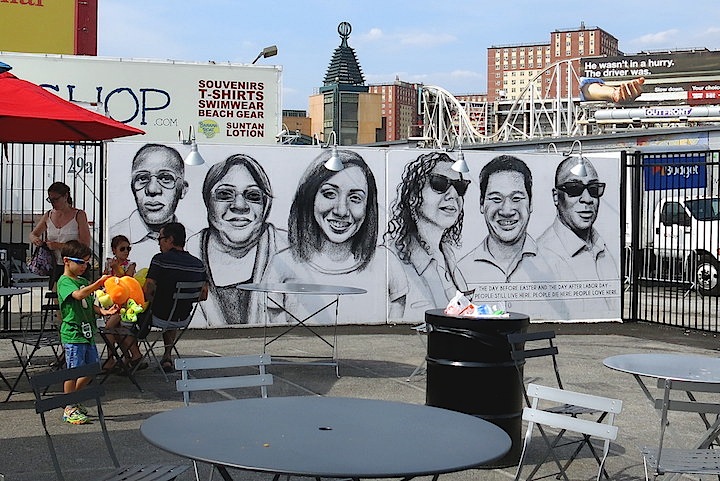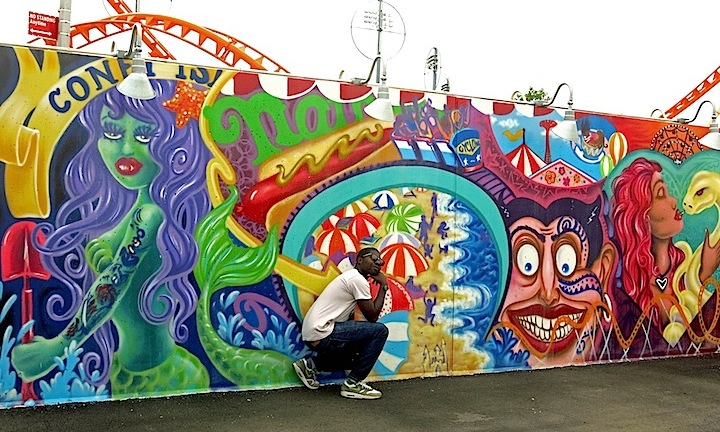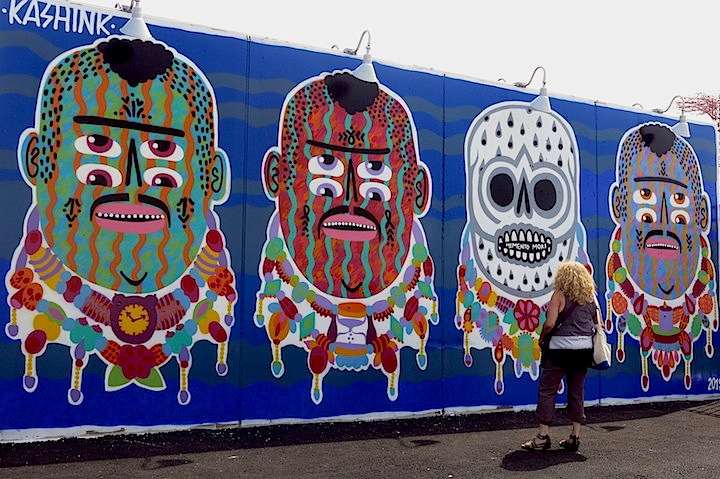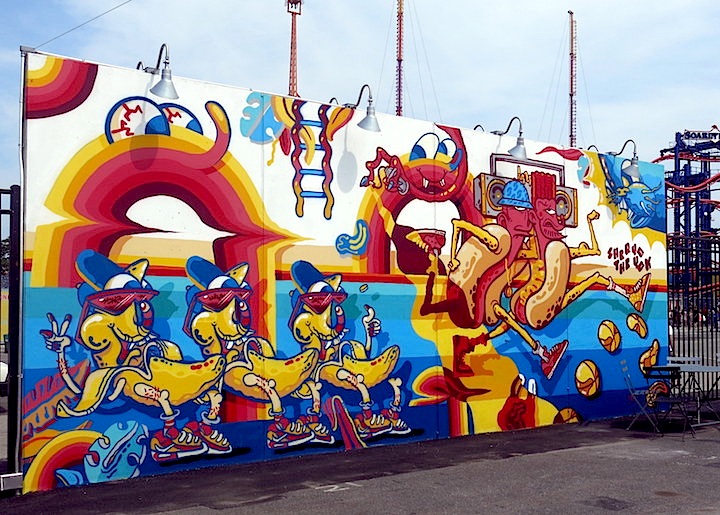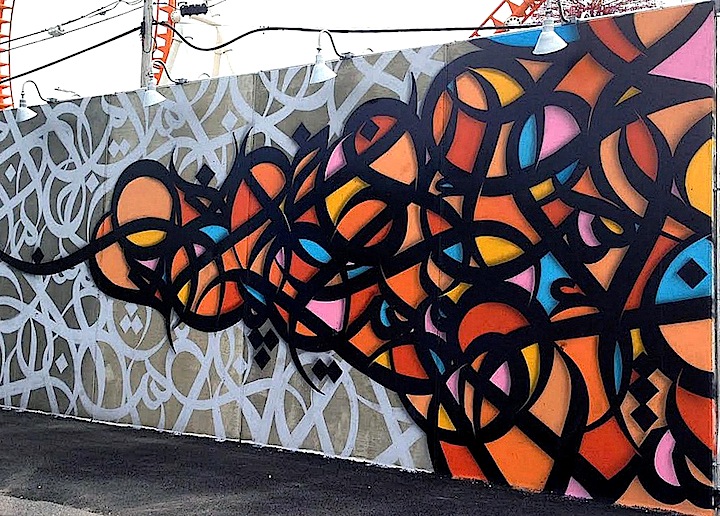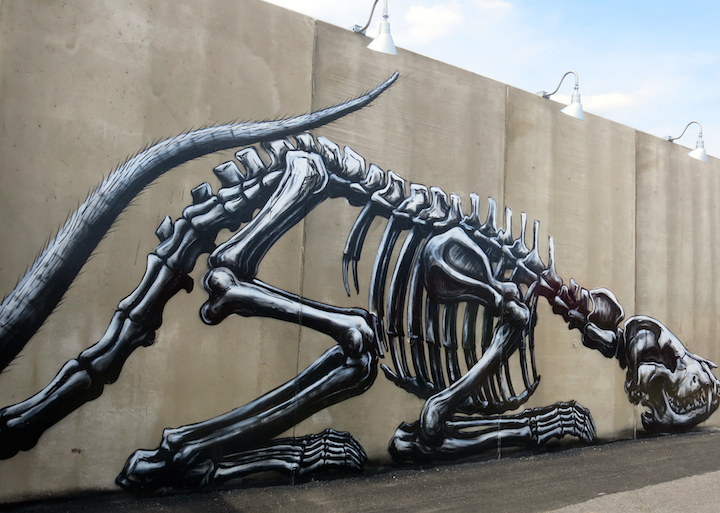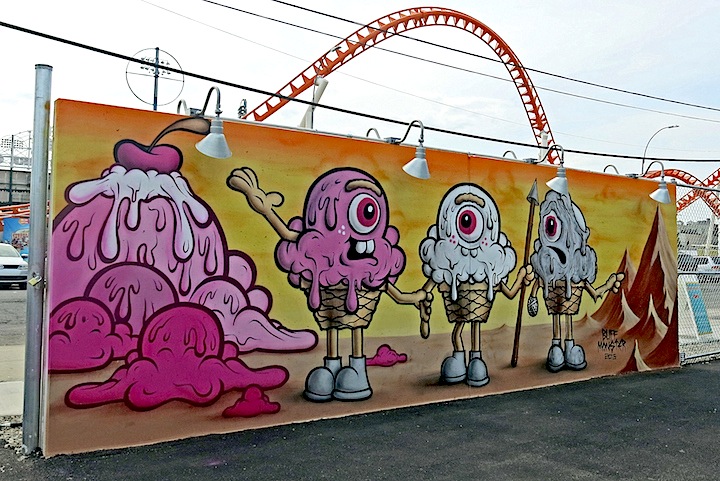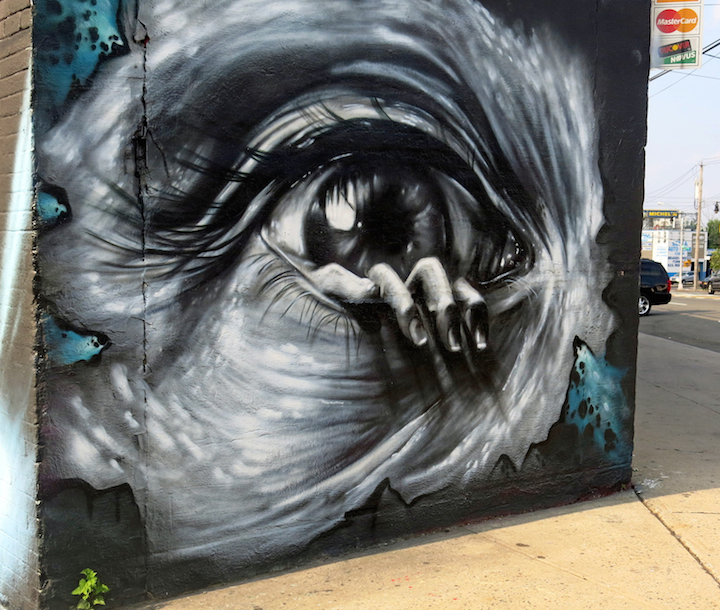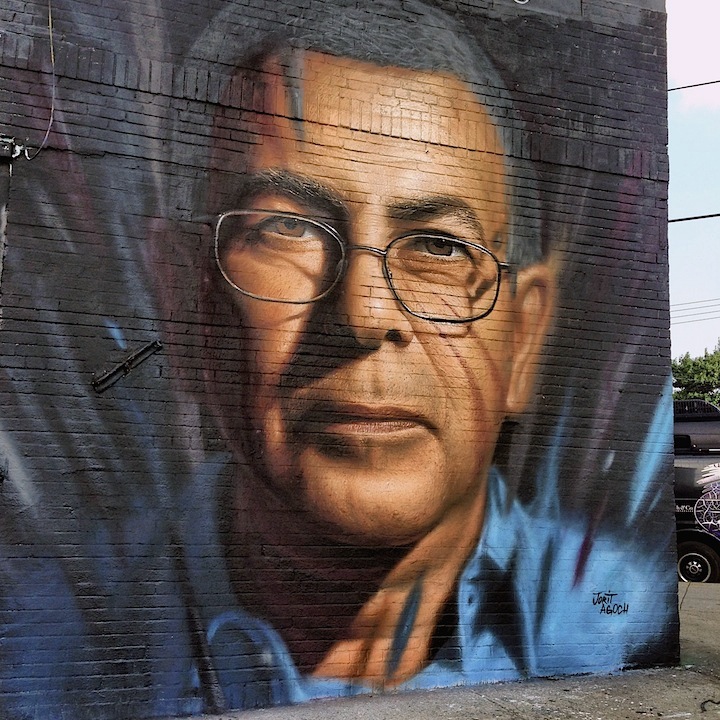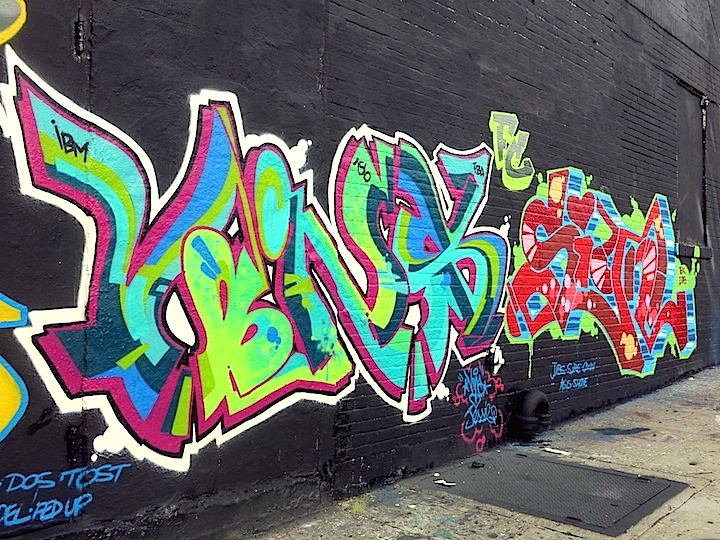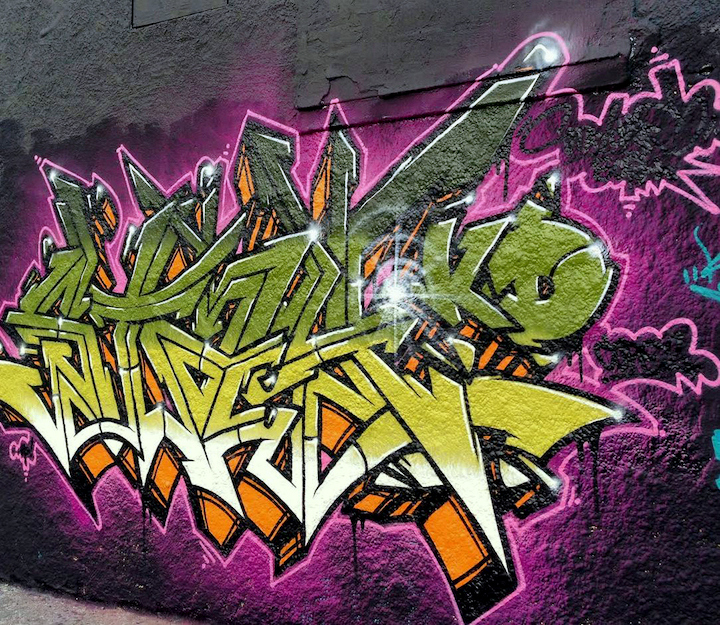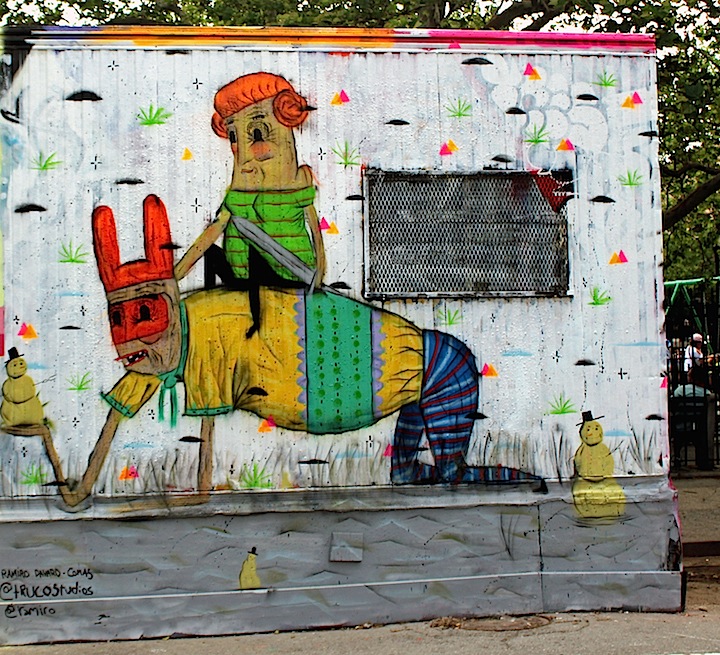
With influences ranging from comic book art to South American/European muralism, Brooklyn-based Ramiro Davaro has created a wondrous world of fantastical characters who have made their way onto public and private spaces throughout NYC and beyond. We recently had the opportunity to visit Ramiro’s studio and speak to him.
When did you first paint on a public surface and where?
It was back in high school around 2002. I was about 16 at the time. I painted some mushrooms on a huge rock at a park we used to go hiking in. It was the worst. I basically ruined a nice lookout.
What inspired you to do so?
I was getting tired of painting on small surfaces. I wanted a larger canvas so I could paint way bigger! But what I painted was so dumb that it took a few years before I was ready to try again. My first real art on the street was in 2007 in Buenos Aires.
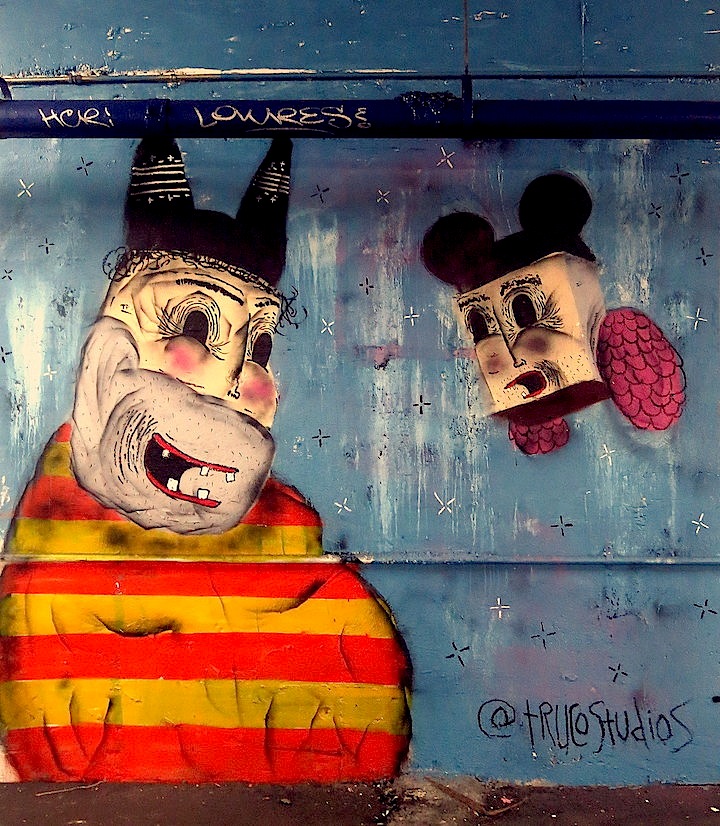
Do any early graffiti/street art-related memories stand out?
I remember seeing lots of political art – with faces of politicians and names of soccer teams — on the streets of Argentina when I was a young child.
What percentage of your day is devoted to your art these days?
About 70%. When I’m not doing something art-related, I’m skateboarding.
How does your family feel about what you are doing?
Everyone likes my work and has been very supportive.
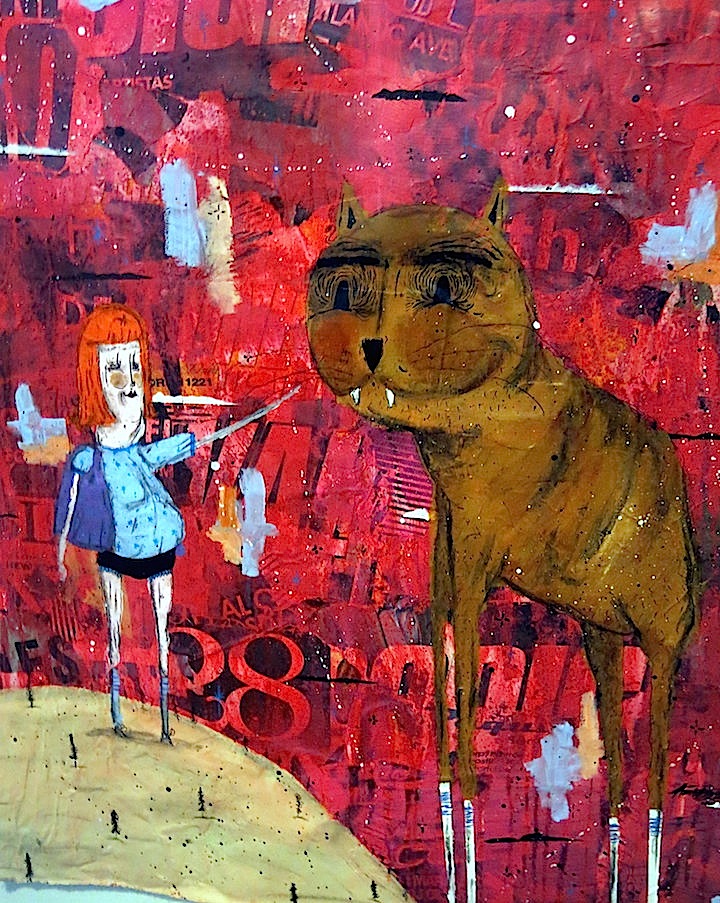
Any thoughts on the graffiti/ street art divide?
I don’t feel it, and I don’t think about it. I love both, and they’re both necessary.
How do you feel about the movement of graffiti and street art into galleries? We’ve seen your work at Cotton Candy Machine in Williamsburg and you are now showing with Brandon Sines at Grumpy Bert in Downtown Brooklyn.
I think it’s good for everyone!
What about the corporate world? Any feelings about that?
So long as I can dominate the conversation and be true to my vision, I don’t have a problem with it.
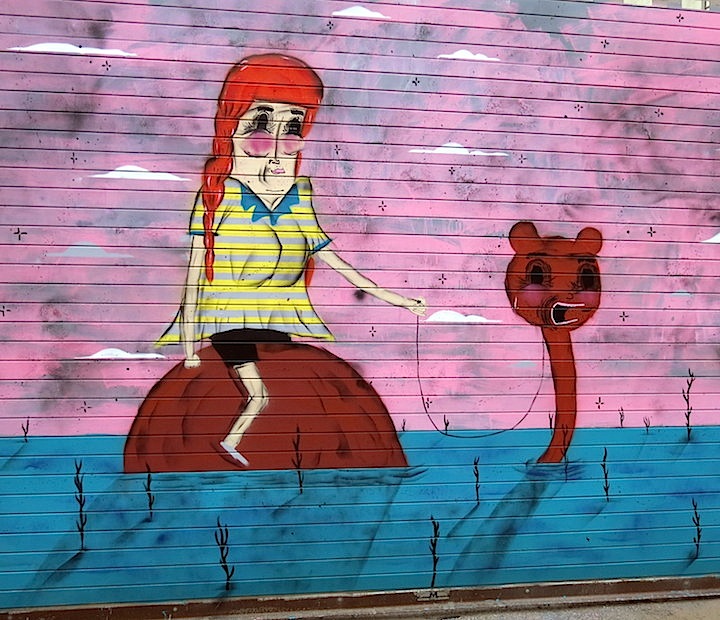
How you feel about the role of the Internet in this scene?
It’s a bit much! It can be insane. But on the positive side, it creates opportunities for artists, and it also builds bridges.
Do you have a formal arts education?
No. I majored in Business. But my mom used to always take me to art museums. While growing up in Massachusetts, I got my very early schooling at the Worcester Art Museum.
Do you work with a sketch in your hand or do you let it flow?
I mostly just let it flow.
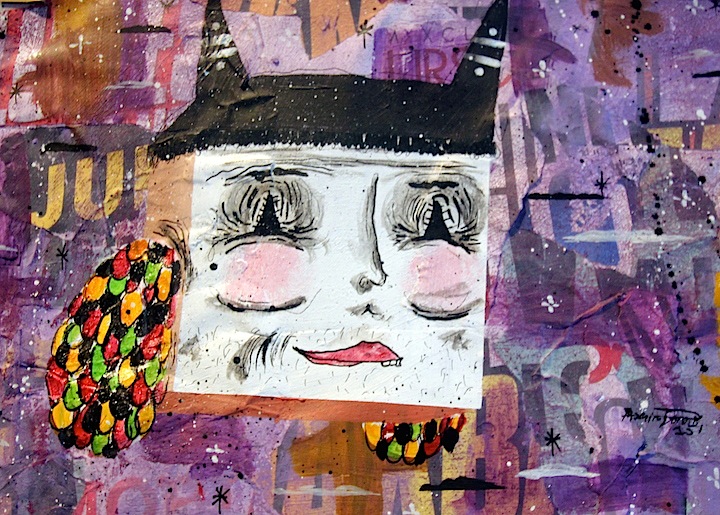
Are you generally satisfied with your work?
About 80% of the time!
How has your work evolved in the past few years?
Before moving to Brooklyn, I had been able to visit and live in different countries. As a result of my experiences, my process has become more mature, more thought-out, and tighter. Working with different companies, painting murals in a range of places and engaging in various projects have also helped me become more flexible and fluid in the work I can produce. In these past couple of years, my hand has really taken over and put a definitive mark on the work I produce.
Are there any artists out there whose works have inspired you or influenced your particular aesthetic?
I remember reading about David Ellis and the Barnstormers crew in Juxtapoz back in 2008. That blew me away! As far as influences — Os Gemeos, D*Face and Word to Mother come to mind.
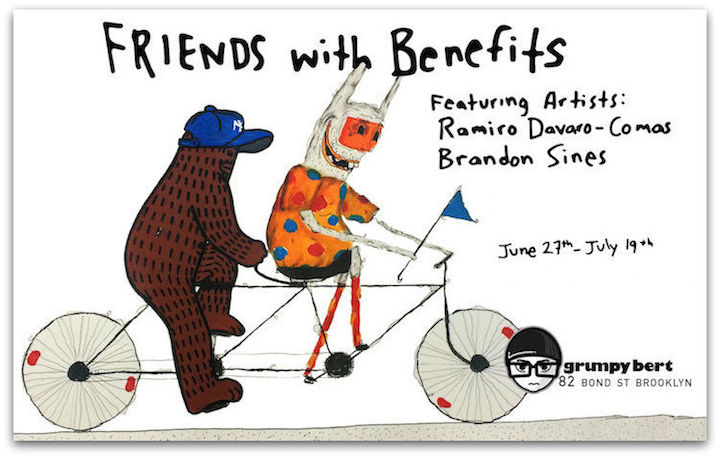
What’s ahead?
More shows and more murals! A group show in LA at Luz de Jesus Gallery in September; a few animations with FlipBooKit for the Maker Faire here in NYC in at the end of September; painting at Art Basel in December; a group exhibit at Redefine Gallery in Orlando in February. Books, walls, Aruba, Argentina and more art!
It sounds great! Good luck with it all!
Note: Through Sunday, you can check out Ramiro’s works — many in collaboration with Brandon Sines — at Grumpy Bert in Downtown Brooklyn.
Photos: 1, 5 Tara Murray; 2 – 4 Lois Stavsky
